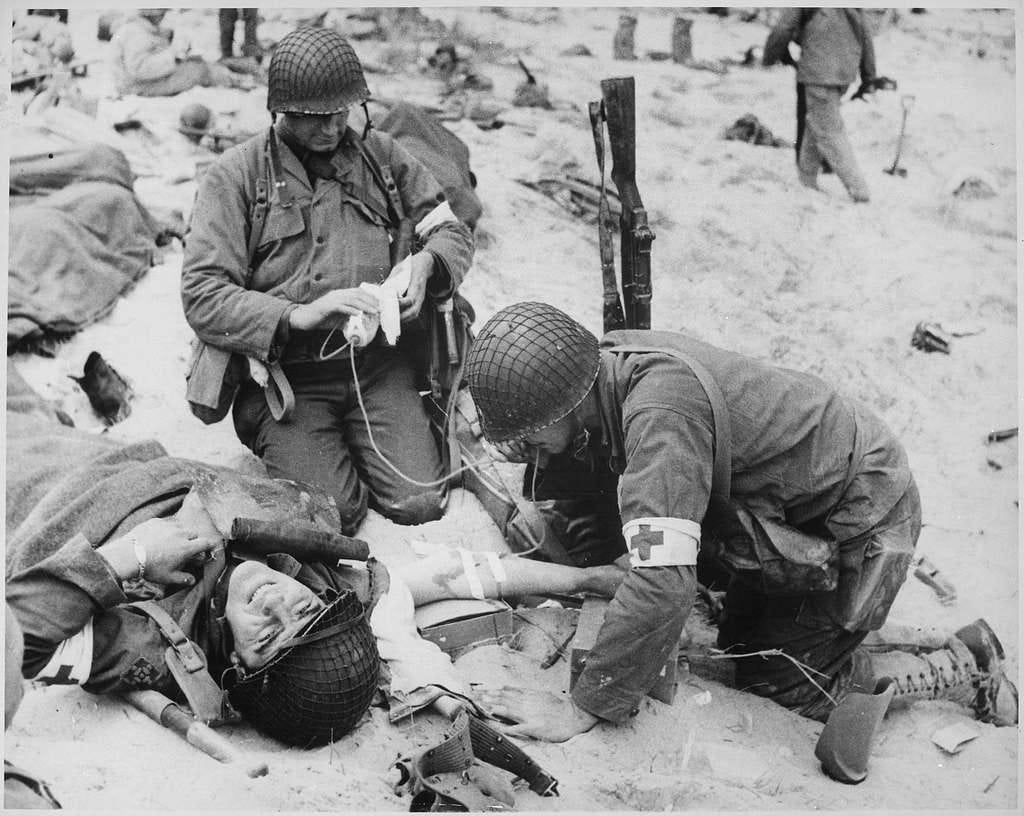Evaluating Edge Cases: How Slippery Slopes Erode the Value of Human Life
Will we step away from the brink?

It was Monday, September 25th, 2000, in San Francisco, California.
Kevin Hines, a nineteen-year-old Golden State native, sat crying on the bus as it made its way to the Golden Gate Bridge, his last stop, where he planned to resolve his problems with one simple step.
He knew jumping off the American landmark would certainly cease his internal anguish from bipolar disorder and other mental stresses.
Yet part of him wanted to stay alive.
So, as the bus made its way to his final destination, which likely hit every green light on the way, Kevin made a deal with himself.
If just one person asks me if I need help, I won’t jump.
But as people entered and exited the bus, nobody said a word to the distressed young man.
Once Kevin arrived at the bridge, sightseers ignored him as he paced up and down the pavement, contemplating his last moments.
I tried, but it looks like this is it, Kevin thought to himself as he pondered the best place to leap.
But suddenly, he noticed a woman trying to get his attention.
Thank God. I don’t have to die today. Someone cares. Maybe it’s only one out of the 1,000 people that saw me crying, but someone cares.
The woman offered her hand, but she quickly shattered Kevin’s relief as he looked at what the woman held.
It was a camera.
Still, however distraught, the disappointed teen managed to smile at the group of travelers and took their picture backdropped by the California sun and glistening bay, ignorant that the favor would be the photographer’s second-to-last deed on Earth.
The woman thanked him and turned away as the travelers continued their vacation.
With no further interventions from strangers, Kevin placed his hands on the guard rail, took a breath, and jumped into the abyss.
Extreme Solutions

Suicide is the most extreme option to solve personal problems.
Debt up to your eyeballs? Facing prison? Saw the trailer for Bros?
Technically, you can solve those problems by simply opting out of life.
Sure, it’s a terrible choice that brings unending anguish for friends and loved ones, but it’s an option nonetheless.
But in most instances, as the cliché suggests, suicide is a permanent solution to a temporary problem.
Still, there are exceptions to the rule, or edge cases, as they say in software development.
For example, we regard killing people as wrong, generally speaking.
Yet shooting a fellow soldier on the battlefield writhing in pain with zero access to medical help and facing inevitable death is considered acceptable, even if the act causes a lifetime of pain for the soldier administering the mercy kill.
It’s an extreme solution for extreme circumstances.
But most people don’t kill themselves or each other due to inescapable physical pain in some far-off land where help is impossible.
And many realize their mistakes only after it’s too late.
Just ask Kevin from the intro.
That’s right.
When he jumped from the Golden Gate 22 years ago, he survived.

Thanks to the cannonball position Kevin landed in and his thick-soled boots, his lower body took the brunt of the impact, sparing his neck and head.
To further suggest he was meant to live, he felt something large and slimy rubbing against his legs.
Great, Kevin thought to himself.
I survived the fall only to be eaten by a shark.
But according to witnesses above, the creature was most likely a dolphin, which assisted Kevin to the surface and held him above water while a Coast Guard boat rushed to his aid.
As Kevin explained in the 2006 documentary The Bridge, the second his hands let go of the railing, he regretted his decision, as did Ken Baldwin, also featured in the film.
The men are among the small fraction of people that survived the jump known around the world, giving us rare insight into what they thought were their last moments.
And they both declared while hurling toward the icy water at around 75 miles per hour, their last thoughts were:
My God, what have I done?

Why Does the Government Insist on Normalizing Edge Case Solutions?
Of course, humans have died by their own hand since the dawn of mankind, and they will continue to do so until the end of time.
And suicide survivors dedicate their lives to helping those in need through motivational speaking and national support groups.
Following the 20-year War on Terror, military suicide deaths are estimated to be 23x higher than the number of post-9/11 combat deaths by 2030.
Veteran organizations like One More Wave fight this grim forecast by providing surf therapy to veterans near coastal cities.
Learning to surf is a meditative and therapeutic process requiring 100% concentration.
But while non-profits seek to stop suicide, some governments and doctors encourage euthanasia.
Edge Cases
Brittany Maynard

As mentioned, we generally make exceptions for mercy killings in extreme circumstances, so there may be edge cases where government-assisted suicide makes sense.
You might recall the Brittany Maynard story from 2014.
The controversial case involved Brittany, a 29-year-old American woman with a brain tumor who passed away after using Oregon’s Death with Dignity Act, which allows eligible patients to receive a lethal dose of barbituates to spare them from the pain of their inevitable death.
Of course, it’s a heartbreaking story, and we like to believe there was another option and maybe there was a solution unknown to those involved.
But that’s an easy thing to say as a healthy person.
I don’t know the details, and I’m not a doctor.
Yet this reaction is the natural human condition.
We don’t like to accept defeat for ourselves and generally don’t want to see each other die.
That’s why we have so much controversy around life support situations.
Terri Shiavo

Perhaps the most famous case was Terri Shiavo, a 41-year-old American woman in a permanent vegetative state following cardiac arrest in 1990.
Terri’s husband argued his wife would not want to be kept alive artificially without the possibility of recovery, but Terri’s parents disagreed.
This led to years of court proceedings in Florida courts but eventually led to the removal of Shiavo's feeding tube in March of 2005 after spending 15 years in a vegetative state.
But these are edge cases.
Unfortunately, after we set precedence for these outlying circumstances, we seem to have created a slippery slope in fundamental value for human life.
When the Exception Becomes the Rule
Extreme physical pain followed by certain death is one argument for euthanasia, but here’s where this radical “solution” goes too far.
Shanti De Corte

In March 2016, several ISIS members entered a Brussels subway and detonated multiple improvised explosive devices, killing approximately 35 people and injuring hundreds of others.
Of course, countless others sustained invisible injuries that would disrupt the rest of their lives.
One of those unfortunate travelers was 17-year-old Shanti De Corte, a Belgian student traveling with friends.
In the following years, Shanti experienced frequent panic attacks and bouts of depression, which led doctors to give her various medications.
I receive several medicines at breakfast -. And up to 11 antidepressants per day. I couldn't do without it. -Shanti De Corte
In 2018 Shanti attempted suicide but failed, and again in 2018.
But she didn’t have the same regret as Kevin Hines, perhaps because the attempts were cries for help.
Unfortunately, through her process to seek aid, doctors led her to state-sponsored suicide.
On May 7, 2022, a Belgian hospital euthanized this 22-year-old physically healthy young woman.
But Greg, you don’t understand what she was going through.

I don’t understand the 11 medications the doctors gave Shanti, whether they were correctly prescribed, if she took them as directed, if the medications themselves clouded her decision-making process, or if she received the correct drugs to begin with.
We don’t know what other factors could have helped, such as alternatives to medications like micro-dosing psychedelics, proper diet, or physical therapy such as services offered by One More Wave.
Because unfortunately, some people think pills fix everything.
But it’s not just me.
Because it’s clear Shanti pondered these questions as well, as she wrote this in an online post:
With all the medicine I take, I feel like a ghost who no longer feels anything. There may have been - other solutions than medicines. -Shanti De Corte
“Do no harm,” right?
Way to go, guys.
Support the Troops

The government can’t even control a Tuesday morning at the Department of Motor Vehicles, so how can we expect them to manage assisted suicide laws properly?
Take a look at this insanity:
A Canadian military veteran recently felt suicidal, so thankfully, the vet contacted the designated helpline.
But the caller didn’t get the life-saving help they should have found.
To his or her horror, the “help” agent asked the veteran if they considered suicide.
What?
Yes, it’s true.
The Veteran’s Affairs Canada agent let the caller know they could take advantage of Canada’s Medical Assistance in Dying (MAiD,) similar to Oregon’s Death with Dignity Act.
Thankfully, this was out of protocol and is not an approved option for veteran assistance.
Yet.
But words are powerful, especially for those struggling to the point they call a suicide hotline, and things could have gone differently.
To be fair, the VAC gave a statement saying:
Providing advice pertaining to medical assistance in dying is not a VAC service. VAC's case managers, veteran service agents, and veteran service team managers have no mandate or role to recommend medical assistance in dying to veteran clients. -Statement from Veterans Affairs Canada
But this option came up because suicide has become normalized in society, and the government allows the practice in some situations.
As we slowly make these edge case options standard, we lose our value for human life.
Abortion

We see the same thing with abortion and “gender-affirming surgery.”
Most reasonable people years ago believed abortion should be safe, legal, and rare, just as we did with euthanasia.
Those edge cases were instances of rape or incest.
The problem is that’s not what happens in most abortions these days.
Today, most abortions are elective, and some even defend killing babies when the child is mature enough to live outside the womb.
As I’ve said before, if you could go back to 1990 and find the most leftist democrat in California and ask them if aborting 9-month babies should be legal, they would look at you in disgust.
Even when people carried out abortions, generally, it was after a complex decision-making process that wouldn’t be appropriate for casual conversation.
Yet here we are, celebrating child death.

Transgenderism also used to be a rarity, yet now those numbers surge because young people are impressionable and “adults” are normalizing edge-case behavior, in addition to the trendiness of the movement itself.
‘Nuff said there, I think.
You get the point.
For God’s Sake, Step Away From the Edge!

We have rules in society, and rules allow freedom, as Navy SEAL and author Jocko Willink says in his book Discipline Equals Freedom: Field Manual.
We, as humans, agree that we should preserve life, stop for someone in need, and not call after 8:00 PM.
But our leaders in the US and around the world are increasingly making more exceptions to those rules, and it’s destroying lives and society as a whole.
And it’s not just in medicine.
War, too, should be an extreme measure we should avoid at all costs, yet it’s more commonplace than ever.
And now, we’re on a slippery slope to completely abandon our care for human life as we stand on the edge of nuclear war.
What’s more, we have psychopaths in charge.
Right now, our leaders pace up and down the pavement at the Golden Gate Bridge just like Kevin and Ken did before they jumped, and we’re begging for them to step away from the edge.
But in this metaphor, their fingers are on the nuke codes instead of their hands on a guardrail.
And if they jump, they’ll take us all into that abyss, and there’s no coming back like the few lucky Golden Gate jumpers.
I wonder, should that happen, God forbid, if those politicians will have the same final thought that Kevin and Ken did when they leaped into the San Francisco Bay:
My God, what have I done?


